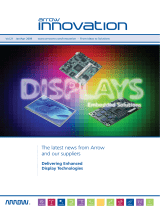ST AN4310 is a versatile and reliable sampling capacitor designed for touch sensing applications on microcontrollers. With its exceptional features, it offers precise and stable capacitance measurements, enabling accurate touch detection and user interaction.
Key capabilities include:
-
Accurate charge transfer acquisition: ST AN4310 utilizes the charge transfer acquisition principle to measure capacitance changes with high precision. This allows for reliable touch detection and accurate position tracking.
-
Minimized non-ideal effects: By carefully selecting materials and employing advanced manufacturing techniques, ST AN4310 minimizes the impact of non-ideal capacitor characteristics such as dielectric absorption, temperature coefficient, and dissipation factor. This results in stable and consistent performance even in challenging operating conditions.
ST AN4310 is a versatile and reliable sampling capacitor designed for touch sensing applications on microcontrollers. With its exceptional features, it offers precise and stable capacitance measurements, enabling accurate touch detection and user interaction.
Key capabilities include:
-
Accurate charge transfer acquisition: ST AN4310 utilizes the charge transfer acquisition principle to measure capacitance changes with high precision. This allows for reliable touch detection and accurate position tracking.
-
Minimized non-ideal effects: By carefully selecting materials and employing advanced manufacturing techniques, ST AN4310 minimizes the impact of non-ideal capacitor characteristics such as dielectric absorption, temperature coefficient, and dissipation factor. This results in stable and consistent performance even in challenging operating conditions.









-
 1
1
-
 2
2
-
 3
3
-
 4
4
-
 5
5
-
 6
6
-
 7
7
-
 8
8
-
 9
9
ST AN4310 is a versatile and reliable sampling capacitor designed for touch sensing applications on microcontrollers. With its exceptional features, it offers precise and stable capacitance measurements, enabling accurate touch detection and user interaction.
Key capabilities include:
-
Accurate charge transfer acquisition: ST AN4310 utilizes the charge transfer acquisition principle to measure capacitance changes with high precision. This allows for reliable touch detection and accurate position tracking.
-
Minimized non-ideal effects: By carefully selecting materials and employing advanced manufacturing techniques, ST AN4310 minimizes the impact of non-ideal capacitor characteristics such as dielectric absorption, temperature coefficient, and dissipation factor. This results in stable and consistent performance even in challenging operating conditions.
Ask a question and I''ll find the answer in the document
Finding information in a document is now easier with AI
Related papers
Other documents
-
Texas Instruments Using External Integration Capacitors on the DDC112 Application notes
-
NXP Semiconductors PCF85x3 User manual
-
NXP PCF85063B User guide
-
PEAK Atlas LCR40 User manual
-
 Arrow Plastic 3M User manual
Arrow Plastic 3M User manual
-
PEAK Atlas LCR45 User manual
-
u-blox LARA-R6 / LARA-L6 System Integration Manual
-
SRS QCM200 Owner's manual
-
PEAK Atlas DCA55 User manual
-
Maxim MAX9778 User manual









